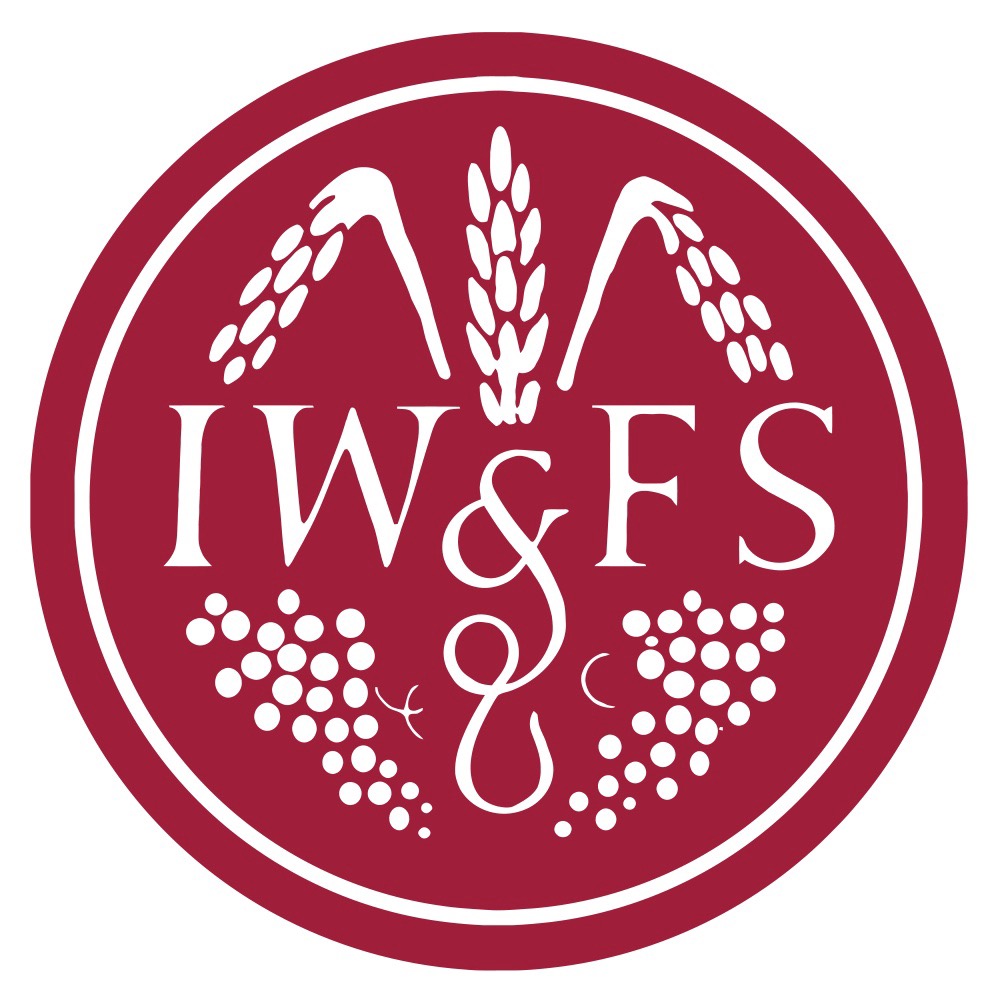Having just spent Christmas in the UK; the English wine that’s rivalling Champagne.
Lizzie Enfield
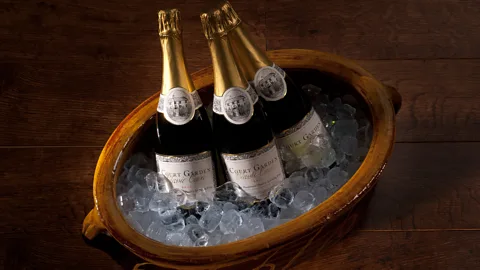
As a result of climate change, English wine producers are now able to grow grapes traditionally associated with Champagne and producing top-quality sparkling wine.
For more than 300 years, Champagne has been the de facto drink of celebration: used to toast weddings, sprayed by winning motor racing drivers and bathed in by Marilyn Monroe. Since this “bubbly” was first produced in 1668 by monk Dom Pérignon in the French region that gave it its name, its reputation has been unsurpassed in the sparkling wine market, despite plenty of competition from other fizzes.
But there’s a new contender in the premium sparkling wine industry, and it’s produced in a region which may surprise global imbibers: the south of England. Global warming means the notoriously cold, wet UK is slowly getting warmer and sunnier, and southern England now has a climate very similar to that of the Champagne region some 50 years ago.
“As a result of this change in climate, English wine producers have been able to grow grapes traditionally associated with Champagne, and produce high quality sparkling wines that exhibit characteristics reminiscent of traditional Champagne,” says Sam Linter, head of wine production at Plumpton Agricultural College, located at the foot of the South Downs (a 100-mile chalk escarpment stretching across south-east England).
“Climate change means we are now able to ripen top quality grapes like Pinot Noir, Pinot Meunier and Chardonnay, suited to sparkling wine production,” says Chris Boiling, editor of the International Wine Challenge’s online magazine, Canopy. “Talent also plays a key role. We have a new generation of wonderful winemakers who are producing consistently good wines. Twenty years ago, [the wines] were regarded as imitations of Champagne. Now, the wine producers have more confidence in their own abilities, grapes and terroir – and English sparkling wine is developing its own distinctive identity, with prominent fruit and toasty, elegant notes,” Boiling says.
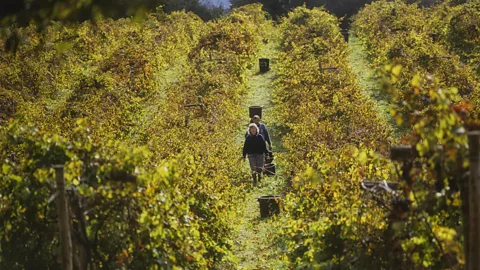
Thirty years ago at Plumpton, the curriculum revolved around arable and animal farming. Now it centres on viticulture, oenology and winemaking. The surrounding land, where sheep once grazed and apple orchards blossomed, is now covered with rows of vines.
“The growth of English winemaking has had a transformative impact on traditional agriculture,” says Linter. “It has altered the landscape and also created new economic opportunities for agricultural communities, including hospitality and tourism.”
World’s Table
BBC.com’s World’s Table “smashes the kitchen ceiling” by changing the way the world thinks about food, through the past, present and future.
Fifteen miles south-east from Plumpton, Rathfinny Vineyard is nestled on the southern slopes of the South Downs in the historic county of Sussex. It’s a 600-acre site, producing 300,00 to 400,000 bottles annually and exports as far afield as the US, Japan, South Korea and Norway.
Before husband-and-wife team Mark and Sarah Driver decided to diversify and embrace wine production in 2010, the vineyard was a working farm employing two people. Now, 90 employees are split between wine production and running the onsite accommodation and restaurant.
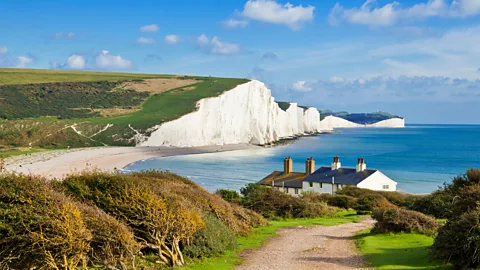
“We are close to Gatwick Airport and London and in a perfect position to capitalise on both wine growing and tourism,” Sarah says. “Our vines are planted on sunny, south-facing slopes. This protects them from frost and the grapes are kept clean and mould-free by a sea breeze, which also adds a lick of salinity to the wine.”
Another key factor in the success of Sussex wines lies in the surrounding landscape and its soil. A short walk from Rathfinny takes you to the mysterious Long Man of Wilmington, a vast chalk figure carved into the side of the hill. A ramble from here, beside the meanders of the Cuckmere River brings you to another mysterious chalk figure – this one of a white horse – and then the iconic Seven Sisters cliffs, whose dramatic crags feature in the films Harry Potter and the Goblet of Fire, Robin Hood Prince of Thieves and on Rathfinny’s bottles.
“The soil we are on is chalk, which is perfect for vines as it holds water and allows vines to flourish without irrigation,” says Sarah, as she runs her fingers over the chalky textured, cut-out cliffs depicted on a bottle of Rathfinny Blanc de Blanc. “It’s exactly the same in Champagne.”
This downland has long provided inspiration for artists and writers. Eric Raviliousevoked the area’s gentle curves and flint-walled buildings in numerous paintings. Writer Virginia Woolf lived at Monk’s House in the village of Rodmell. Her sister, Vanessa Bell, and her lover Duncan Grant (both painters) were close to Rathfinny at Charleston Farmhouse. The old Saxon church in the village of Berwick is decorated with murals the pair painted during World War Two. It includes scenes from the grain and fruit harvest.

At the time, though, there were no grapes.
It was the Romans who first brought grape vines to Britain 2,000 years ago. The Normans also successfully established viticulture 1,000 years later, but viticulture declined in the Middle Ages. And despite a flurry of interest sparked by 18th-Century adventurers, it was not until the 1970s that an English winemaking renaissance truly began.
“The Bolney Wine Estate, established in 1972 by Rodney and Jean Pratt in West Sussex, has been at the forefront of the English wine movement and played a significant role in shaping the country’s winemaking landscape,” says Linter, who was previously Bolney’s chief winemaker. “In the 1970s, the production of English wine faced inherent risks and challenges due to unpredictable weather patterns, limited knowledge about suitable grape varieties for the climate and a lack of established winemaking traditions.”
More like this:
• The little-known history of Champagne
• How French winemakers outwitted the Nazis
• Vineyard pitches English wine against Champagne
Bolney, along with a few other pioneering producers, took on these challenges and paved the way for the modern English wine industry by demonstrating that it was possible to produce exceptional wines.
There are now nearly 1,000 vineyards in England and Wales, with 500 in Sussex alone. Perched on the site of a former Neanderthal encampment overlooking Chanctonbury Ring’s Iron-Age fort sits Redfold Vineyard. Its owners, Charles and Wendy Outhwaite, are part of a new generation of winemakers getting international recognition. Redfold’s Ambriel Classic Cuvée was nominated by Decanter Magazine as one of their Wines of the Year in 2020. In fact, all the wines from their first harvest won international medals, and they are not alone.
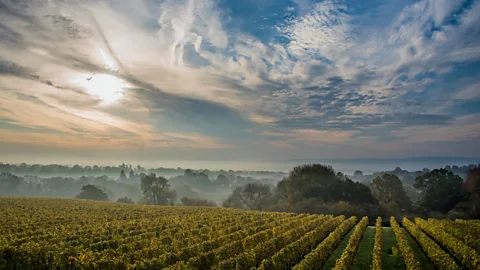
English wines have garnered significant recognition and acclaim on the national and international stage and have been featured at prestigious state dinners and royal events. Plus, in blind tastings against Champagne, they have held their own – so much so that Champagne producers have started buying large swathes of land in the UK.
“[French Champagne producers] Pommery and Taittinger are snapping up real estate in southern England,” says Boiling. “Cava behemoth Henkell Freixenet, South Africa’s Benguela Cove and California-based Jackson Family Wines have also done so. They all see the potential for producing top-quality sparkling and still wines here.”
Sussex sparkling wines retail on average from about £20 to £40 a bottle and names of South Downs’ vineyards, such as Bolney, Ridgeview, Nyetimber and Rathfinney are becoming synonymous with premium sparkling wines among bubbly connoisseurs. Alongside other vineyards, they are regular winners of English Sparkling Wine accolades awarded by Decanter Magazine, the International Wine Challenge and Wine of Great Britian (Wine GB).
“Our wines are now recongised as being of consistentely high quality,” says Sarah. “So our hope is that, one day, people will celebrate with a glass of Sussex rather than Champagne.”
